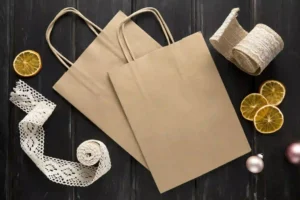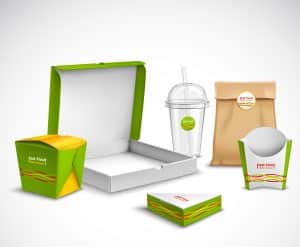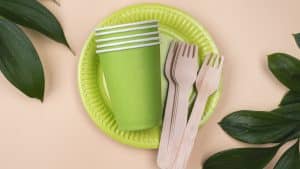
Sustainable packaging is a concept that refers to the development and use of packaging solutions that minimize environmental impact, reduce waste, and are economically feasible. The need for Eco-Friendly packaging has become increasingly evident in the USA in recent years, given the growing concern over the impact of plastic waste on the environment. The future of sustainable packaging is promising, with many innovative solutions emerging to tackle the environmental challenges that packaging poses. However, several challenges must be addressed to make sustainable packaging a reality. In this article, we will explore some of the challenges and innovations in biodegradable packaging, as well as the trends that are likely to shape the future of Eco-friendly packaging.
1.Challenges of Sustainable Packaging:
In recent years, there has been a growing push towards Eco-friendly packaging as companies seek to reduce their environmental footprint and meet the demands of increasingly environmentally conscious consumers. While sustainable packaging has numerous benefits, several challenges come with it, ranging from consumer behavior to the economics of sustainable packaging.
A) Limited Availability of Viable Alternatives:
One of the main challenges of sustainable packaging is the limited availability of viable alternatives to traditional materials like plastic. While there are some promising options, such as bio-plastics made from plant-based materials, these materials are still relatively expensive. They may be less durable and effective than their traditional counterparts. In addition, some materials touted as environmentally friendly, such as paper and cardboard, can be resource-intensive to produce and can contribute to deforestation if not sourced responsibly.
B) Consumer Behavior:
Another challenge of sustainable packaging is consumer behavior. While consumers are increasingly becoming more environmentally conscious, they are also cost-conscious. Many consumers would prefer to avoid paying extra for biodegradable packaging, making it difficult for companies to adopt Eco packaging solutions. To address this challenge, companies must find ways to make Eco-Friendly packaging economically feasible while meeting consumer demand for affordable products.
C) Economic Feasibility:
Sustainable packaging solutions can be more expensive to produce than traditional packaging, which means companies must balance their commitment to sustainability with their bottom line. To face this challenge, companies must find ways to reduce the cost of sustainable packaging while maintaining their commitment to sustainability.
D) Infrastructure:
Another major challenge is more infrastructure and systems to support sustainable packaging. For example, in many places, there are limited options for recycling or composting certain types of packaging, making it difficult for companies to dispose of or reuse these materials effectively. Similarly, there is often a need for more standardization around Eco-Friendly packaging, making it challenging for companies to implement sustainable solutions across their entire supply chain—investment in recycling and waste management infrastructure that can handle biodegradable packaging materials.
Despite these challenges, there are some strategies that companies can employ to overcome the obstacles to sustainable packaging. For example, many companies are exploring alternative materials and designs that offer the same functionality as traditional packaging while reducing environmental impact. This may involve working with suppliers to find more sustainable sources of materials or investing in new technologies that can produce more effective and efficient packaging.
In addition, companies can work to build out the infrastructure and systems needed to support sustainable packaging. This may involve partnering with recycling facilities or investing in composting technology to ensure sustainable packaging is effectively disposed of or reused. Similarly, companies can work to establish standards and certifications around Eco-Friendly packaging to create a more cohesive and standardized approach to sustainability across the industry.
Another key strategy is to educate consumers about the benefits of Eco-Friendly packaging and to address any concerns or misconceptions they may have. This can involve promoting the environmental benefits of Kraft Packaging and highlighting the functionality and convenience of these materials.
Finally, companies can work to address the cost issue by exploring new business models and partnerships that make sustainable packaging more affordable and accessible. For example, some companies are exploring circular economy models. Where packaging is designed to be reused or recycled, or are partnering with suppliers. And other stakeholders to pool resources and share the costs of Eco-friendly packaging solutions.
2. Innovations in Eco-Friendly Packaging
Despite the challenges, many companies are making significant progress in developing sustainable packaging solutions. Here are some of the innovative solutions that are emerging:

A): Biodegradable Plastics:
Biodegradable plastics are one of the most promising sustainable packaging solutions. They are made from renewable materials like corn starch and can be broken down by natural composting. Companies like Pepsi Co and Nestle have already started using biodegradable plastics for packaging. This solution face the challenge of plastic waste, as biodegradable plastics break down naturally and do not contribute to the accumulation of plastic waste.
B): Edible packaging:
is another emerging innovative solution. Companies like Loliware and Thinkink Packaging make packaging that can be eaten or dissolved in water, eliminating the need for disposal and reducing waste. This solution addresses the challenge of waste management, as edible packaging can be consumed, reducing the amount of waste generated.
C) Recyclable Materials:
Many companies are exploring recyclable materials like paper, cardboard, and glass as sustainable packaging solutions. These materials are easily recyclable and can be used multiple times. This solution addresses the challenge of waste management, as recyclable materials can be reused, reducing the amount of waste generated.
D) Minimalist Packaging:
Minimalist packaging is a trend that is gaining popularity. Companies are reducing the amount of packaging used, using thinner materials, and designing packaging that takes up less space. This reduces the amount of waste generated and makes transportation more efficient. This solution addresses waste management and consumer behavior challenges. As minimalist packaging reduces the amount of waste generated and meets consumer demand for environmentally friendly products.
3.The Future of Green Packaging:

The future of Eco packaging looks bright, with many exciting developments on the horizon. Here are some of the trends that are likely to shape the future of sustainable packaging:
A) Advanced Recycling Technologies:
Advanced recycling technologies like chemical and hydrolysis are likely to become more popular. These technologies can break down plastics and other materials that are difficult to recycle using traditional methods. This will make it easier to recycle a wider range of materials.
B) Renewable Materials:
Materials like hemp, bamboo, and algae will likely become more popular as biodegradable packaging solutions. These materials are renewable, biodegradable, and can be grown without pesticides.
C) Smart Packaging:
Smart packaging that can monitor the condition of products and communicate with consumers is likely to become more common. This will reduce food waste and improve the consumer experience.
D) Circular Economy:
The circular economy, where waste is minimized and reused or recycled materials, is likely to become the norm. This will require a shift in how we design products and packaging, ultimately resulting in a more greener future.
Final Words:
The future of sustainable packaging is both promising and complex. While many exciting innovations and solutions are available to companies looking to reduce their environmental footprint. There are also a number of challenges that must be addressed to make biodegradable packaging a viable and effective solution. From the limited availability of possible alternatives to traditional materials to the lack of infrastructure and systems to support Eco-Friendly packaging. Addressing these challenges will require a collaborative and innovative approach from all stakeholders involved in the packaging industry. By working together and investing in sustainable solutions. We can create a more reliable and sustainable system for packaging that benefits both the planet and our businesses.
Hot News
Need For Some Help ?
If you don’t see what you need, please contact us and we’ll do our best to accommodate your needs.
Phone
+1-816-875-6317
support@thinkinkpackaging.com




